As autumn ends, hat-covered minds might turn to literature with scenes of Christmas, cold and snow. To cite the title of an Ann Beattie book, we're talking Chilly Scenes of Winter here!
One author who immediately comes to mind is Jack London, given that several of his novels are set in the scary/exhilarating Alaskan and Yukon wilderness. Among them are London's famous The Call of the Wild and White Fang, and his lesser known A Daughter of the Snows and Burning Daylight. Plus the unforgettable short story "To Build a Fire."
While The Call of the Wild is slightly better than the also stellar White Fang, readers who want to end a wintry book in a warmer clime might prefer the latter novel. Thankfully, wolf-dog Fang doesn't don sunglasses after reaching California!
Winter brings Russian novels to mind as well. Two of many examples include Alexander Solzhenitsyn's One Day in the Life of Ivan Denisovich, set in a bitterly cold prison camp; and Leo Tolstoy's War and Peace, which includes the invasion that eventually ends in a snowy debacle for Napoleon and his army.
English novels offer plenty of low temperatures, too. For instance, there's the harsh winter that brings illness and death to many underfed, badly clothed Lowood students in Charlotte Bronte's Jane Eyre, and the deep snow St. John Rivers trudges through to impart major monetary and familial news to Jane in her teacher's cottage.
There are also winter scenes in several Charles Dickens books -- including A Christmas Carol, of course. The magical snowy days at Hogwarts are a periodic staple in J.K. Rowling's Harry Potter series. And how about that Misty Mountains blizzard that hits Frodo, Gandalf and crew in the first book of J.R.R. Tolkien's The Lord of the Rings trilogy?
Canadian novelists also know their way around nippy settings. (I wonder why?) There's the inspiring/bizarre spectacle of Ephraim Gursky -- during his Jewish Eskimo phase! -- mushing around Canada in Mordecai Richler's Solomon Gursky Was Here. The blissful months Valancy Stirling and Barney Snaith spend in their winter-wonderland abode in L.M. Montgomery's The Blue Castle. (If Valancy and Barney wrote a memoir, it would not be called The Winter of Our Discontent.) And the depressing burning of magazines on a very cold day in Margaret Atwood's The Handmaid's Tale -- a novel actually set in a future U.S., not Canada.
Returning to American authors, there's the poignant moment when a Christmas carol is heard near a church in Ralph Ellison's Invisible Man, the touching Christmas-morning scene in Louisa May Alcott's Little Women, the Christmas-pageant tussle between Molly and Cheryl in Rita Mae Brown's Rubyfruit Jungle and Molly's bitingly cold night in an abandoned car when she arrives in New York City after being forced to leave a Florida college for being gay.
(I just read Rubyfruit Jungle for the first time; it's groundbreaking, and very funny. Thanks to commenters "giftsthatpurr," "gypsynomad," "henriette and hube" and "sabelmouse" for recommending that novel and its author under one of my November posts.)
Or how about Pierre Glendinning's struggle to write in a frigid NYC room in Herman Melville's Pierre? The reception Glendinning's book eventually receives reflects Melville's real-life despair at the way critics and the public dismissed a pre-Pierre novel you may have heard of -- Moby-Dick, which stars a whale the color of ... snow.
Also memorable are the nightmarish sledding accident near the end of Edith Wharton's Ethan Frome, the ultimately happy scene between Walter and the almost-frozen Patty near the end of Jonathan Franzen's Freedom and the boat voyage toward the South Pole that closes Edgar Allan Poe's The Narrative of Arthur Gordon Pym. Oddly, the water in Antarctica keeps getting warmer in that novel by Poe, who does mention extreme cold during another boat voyage in his haunting short story "Ms. Found in a Bottle."
And what about that bitter 19th-century Nebraska winter depicted by Willa Cather in My Antonia? Or Ashima's arrival in frigid New England after a plane ride from India in Jhumpa Lahiri's The Namesake? Or the cold Midwestern temperatures Henry DeTamble often suffers through when bouncing around time in Audrey Niffenegger's The Time Traveler's Wife?
Literature's wintry scenes, whether happy or sad, stick in our minds for obvious reasons: We enjoy seeing characters open Christmas presents or we cringe at the stress that icy conditions heap on shivering protagonists (especially non-affluent ones). Also, it can be satisfying to read about very cold weather in a book when one is sitting in a warm house or apartment. Vicarious chills!
What are some of your favorite novels or other literature with wintry scenes?
--
Dave Astor's 2012 memoir Comic (and Column) Confessional includes a preface by Heloise and back-cover endorsements by Arianna Huffington, "The Far Side" cartoonist Gary Larson and others. Those three also appear in the partly humorous book, along with other famous columnists and cartoonists and people such as Hillary Clinton, Walter Cronkite, Coretta Scott King and Martha Stewart. If you'd like to buy a personally inscribed copy (for less than the Amazon price), contact Dave at dastor@earthlink.net.